#and tinashe's complex shoot
Text
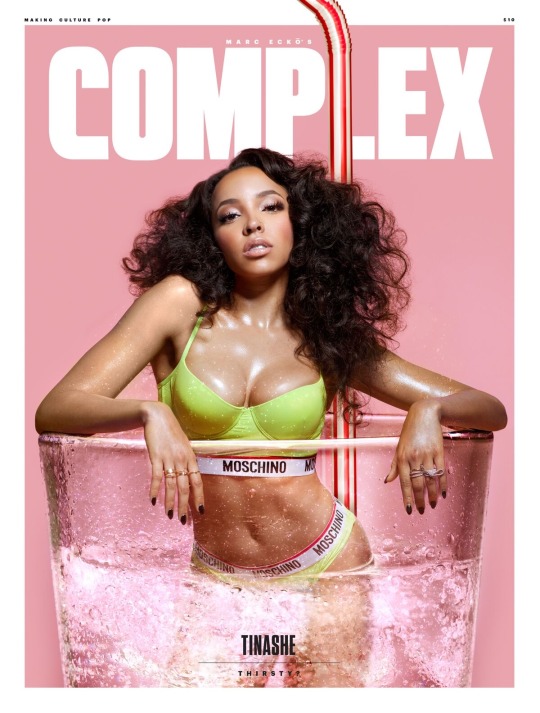












Tinashe, Complex Magazine Feb/Mar 2016
#fav shoot#tinashe#complex#complex magazine#fashion#style#music#summer#photoshoot#editorial#magazine#photography#magazine cover
19 notes
·
View notes
Text
Uncovered: The Ninja Tales
3. Machinedrum - 3FOR82 (2024)
To complete our trilogy of ‘The Ninja Tales’, Part III takes a look at the hidden spot gloss ASCII artwork for Travis Steward's aka Machinedrum’s 11th studio album, 3FOR82 out on Ninja Tune on 24th May 2024. It is reported that Stewart crafted the album during a pilgrimage to Joshua Tree National Park, California, to seek clarity and inspiration, saying, “..I knew that I should, at some point in my life, go out there to work on something creatively.”

Fascinated by the outwardly simple artwork that, in reality has many hidden depths, we caught up with graphic designer and Machinedrum's Creative Director, Joseph Durnan and Ninja Tune’s Head of Production, Sean Preston to understand more about the process for creating the album’s hidden code artwork using The Demoscene. For us mere mortals unfamiliar with The Demoscene, it is an international computer art subculture made up of a worldwide network of creative minds, focused on producing demos: self-contained, sometimes extremely small, computer programs that produce audiovisual presentations.
Joseph told us, “One component we latched onto early was the Demoscene's challenge of keeping file sizes as low as possible while maximising the complexity of the demos. ASCII art, halftoning, and duotone degrading helped express that idea, with legendary demoscener TPOLM's art and Travis' (Machinedrum) personal artefacts from his teenage years acting as source material. The words flooding the sleeve and hidden code are nods to personal messages within Demoscene culture—references to in-jokes, cryptic sayings and messages to other demo makers. I liked how this type of content could either seem conceptual and esoteric to an outsider, or something between total gibberish and a confusing nerdy joke. Blending this with the 3FOR82 process involved using personal numbers related to birth dates, in-studio references among the album collaborators, and redundant information about the WAV files for the album tracks.”


Accompanying the record is a 16-page boutique zine. Joseph explains, “The accompanying zine goes deeper into the archival aspect, including rules from a quest-style video game imagined by Machinedrum as a child and a transcript from his first-ever interview. It also features nostalgic cyber-culture-style artwork contributions from Sensory Works and bitmapped photos from studio shoots with Tinashe and AK the Saviour.”
The limited edition translucent yellow glow vinyl edition, includes an alternative Dinked album art oversleeve and Joseph told us more about this, “For the limited edition Dinked art, TDR's Ian Anderson "3FOR82" font was degraded via an online ASCII art converter, overlaid with the T-26 font "Bias” for the MACHINEDRUM type. The font non-coincidentally looks good with Ian's logotype because a lot of the T26 foundry's typefaces made their way into his designs in the 90s and early 00s - which is widely held up as an era defining body of work within that world. Something definitive of the visual language of electronic music was how much of the artwork developed with technology, mirroring the way the Demoscene visuals have mutated over the past 30 years.”


Ninja Tune’s Head of Production, Sean Preston worked alongside Durnan on the album artwork and gave us his insight into the creative process.
He told us, “I think if anyone else other than Joe had come to me with the premise for the latest Machinedrum album I would’ve done all I could to put them off, but having suffered under the designer’s collaboration for several years, I was all too aware of his penchant for ASCII art, glitchy graphics, and secret gifts/traps buried deep within pixel data for me to find. Sometimes, where you land with the final packaging on a record, is more pleasing or rewarding because of the pitfalls laid before it, most of which in this instance we couldn’t have known ahead of the course.”
Sean explains, "Initially pencilled for manufacture in Ireland, we had to pivot to printing some of the sleeves there, stickers, zine booklet and o-card (for the Dinked edition) in three separate locations in the UK, and pressing the vinyl in France. The danger in working that way is that most printers have their own calibration settings for sleeves and o-card sizes. It also presents a risk to hitting colour consistency across the print parts. Getting printers to talk about these things with each other isn’t always a harmonious of fruitful pursuit, but with a good amount of physical proofing, some nervy stress tests, the record comes together really well.”


We asked more about the 16 page zine insert and Sean explained, “The zine booklet, complete with French folds, feels like a real artefact, centring the artwork’s ambition on an uncoated offset paper and card. The outer sleeve is 6-colour, utilising a bright Pantone Green and Pantone Orange against a CMYK composite, overlaid with a blind spot varnish. A blind varnish is a varnish that doesn’t necessarily correspond to the colour artwork it is printed on. Often when you see this, the blind varnish is vibrant, blind only in name, and usually employed as large block text, which requires a certain level of legibility. I visited the printer near Dublin specifically to get the right amount of subtlety to the overlaid varnish. Because of the miniscule, dotted areas occupied by the varnish, the traditional method of varnishing wasn’t going to give us the fine detail desired. The beauty of working with the sort of printer we did (AngloPrinters in Drogheda, around 45 mins north of Dublin) is that they are experienced and agile enough to recognise intention and move to solutions that benefit the artistic purpose. The finished sleeve now holds a finely detailed varnish that is present in light, but subtle enough to maintain the overall clandestine aesthetic that pervades the album’s artwork and music.”

youtube

3FOR82 by Machinedrum is released on Ninja Tune on 24th May 2024. Artwork by Joseph Durnan [124 World]. Typography by Ian Anderson (The Designers Republic). Record FlipFrames by Art Vinyl.
#art vinyl#album cover art#digital art#record cover#machinedrum#ninja tune#graphic design#ascii art#demoscene#artanddesign#uncovered
7 notes
·
View notes
Photo
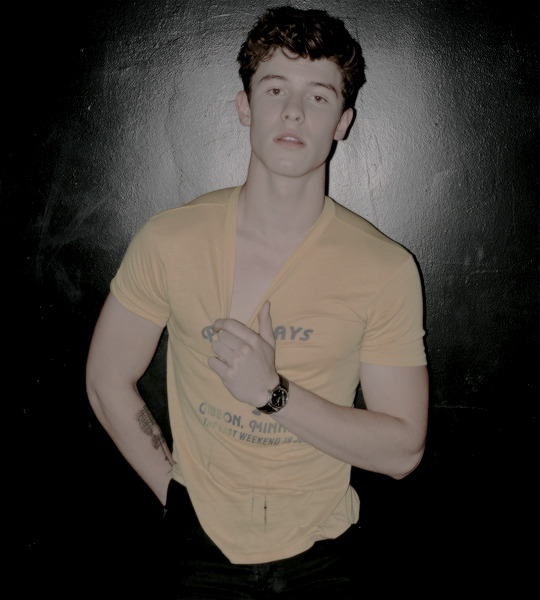
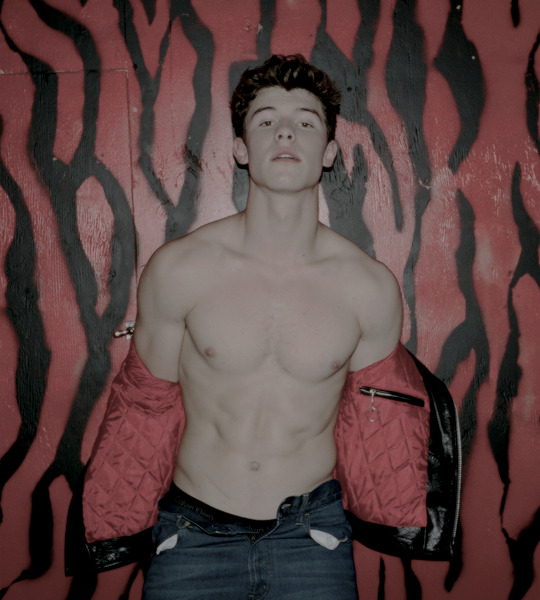
shawn mendes for flaunt magazine
#shawn mendes#smendesedit#dailymenedit#shawnmendesedit#celebritiesource#*#this is one of my favorite photoshoots ever#it's up there w/nicki's fader and paper shoots#and tinashe's complex shoot
25 notes
·
View notes
Text
Blood Orange & Queer Media

Blood Orange (Photography by Matthew Leifheit)
Devonté Hynes is a virtuoso musical artist; a singer, songwriter, producer, and composer that is better known under the name Blood Orange. Under the moniker Blood Orange, Dev Hynes has released three albums: Coastal Grooves, Cupid Deluxe, and Freetown Sound, and has worked with the likes of Tinashe, Solange Knowles, FKA Twigs, Carly Rae Jepsen, and Sky Ferreira. Blood Orange is a versatile artist that is included within a movement of musical consciousness that integrates more inclusive listening for audiences who often feel excluded from the narratives told through traditional popular media. Blood Orange’s approach to music includes R&B and electronic roots which convey messages spanning from racial injustice to gender identity and sexuality, incorporating his own fluid identity with sexuality and gender that allow for Devonté Hynes to tell stories that are personal, yet universal.

(”Coastal Grooves” by Blood Orange)
A quick glance at the album cover of Blood Orange’s first album, Coastal Grooves, shows a glimpse into the drag scene that was alive in New York City within the bar Sally’s II. The photograph that is featured on the album cover portrays one drag performer by the name of Exotica, as captured by the photographer Brian Lantelme in a series that documented the history of Sally’s II (http://www.sallys-hideaway.com/A_Pictorial_History.html). The inclusion of this photo is a testament to how drag and queer spaces have influenced the creation of Blood Orange’s musical endeavors.

Blood Orange (Press Here Productions)
In an interview with Fader, Dev Hynes discussed the ways that he found himself relating to “the gay ball scene in New York in the ’80s” and how difficult “being young and black and gay at that time” must have been. Hynes’ related to this feeling of being discriminated against as he “faced a lot of prejudices like that” and would ultimately be targeted in physical attacks because he stood out against the traditional masculine gender role that is expected by society (http://www.thefader.com/2011/06/24/dollars-to-pounds-blood-orange/). This parallel between Dev Hynes’ story and the drag ball scene exemplifies why including more diverse representation is absolutely crucial within media, because it delivers stories that give strength to others who go through similar experiences. Pop culture is in part perhaps created to be entertaining, but also in part created to “nevertheless become part of our mass consciousness: social and political events that stand as touchstones of collective experiences” (Why Pop Culture Matters, pg. 3). Producing media that is representative of the shared struggles of certain identities can give strength and validation to the groups that experience these struggles. In turn, we are delivered more intersectional media from Blood Orange that can reach others which creates a cycle of art that further expands its outreach.

Blood Orange - Sutphin Boulevard Music Video
The influence of drag performers continues to reach the song “Sutphin Boulevard”, the second track off of Coastal Grooves. The music video for this song features Dev Hynes being present at a drag bar as performers are shown intermittently throughout the video. This plays homage to the gay bars and the world of drag that Dev Hynes often visited as a younger man to go out dancing. This world of drag and gay bars was a supporting place that Dev could go to dance and express himself and his fluid identity. Fluidity in gender or sexuality is something that breaks apart the dichotomy that gender and sexuality exist as a binary, and “instead of arguing that homosexuality is the binary opposite of heterosexuality... all sexualities are merely points on a continuum of possibilities” (http://mediasmarts.ca/diversity-media/queer-representation/queer-representation-media). This idea that sexuality exists within a continuum is an idea that Blood Orange expresses through music, as he does not subscribe to strict labels when discussing his own sexuality. Blood Orange recalled the contrast of the life he had in London: “lying on the floor with a fucking broken nose and being stamped on, spat on, being called ‘faggot’ and thrown off buses,” but then being able to explore the gay bars in New York and be inspired by the drag scene as well as the performers found in the documentary Paris is Burning. Looking up to performers such as Octavia St. Laurent, Dev Hynes found that “looking and reading and seeing the wonderful work that these people have made is still inspiring to this day” (https://pitchfork.com/features/interview/9911-the-realest-out-a-conversation-with-blood-oranges-dev-hynes/). Sutphin Boulevard is a song that encaptures themes of being queer and performing drag and gender, and displays the inspiration and joy that can be found within these scenes. Blood Orange plays homage to these scenes, and the audience is able to admire the ways that drag can have a powerful influence on others.
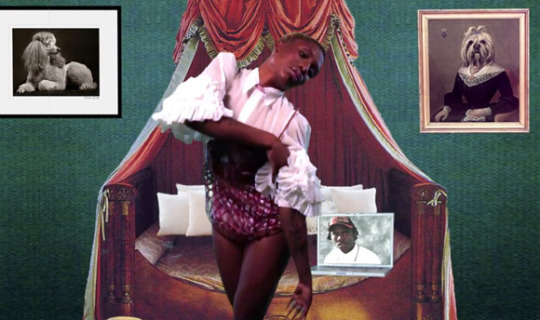
Blood Orange - Champagne Coast Music Video
The album closes with “Champagne Coast”, a lush song full of synths that blossoms as more samples and layers are added to the track. This progression builds the themes of desire and investment with the repeated plea “come into my bedroom”. Dev desires to be intimate with this person, but is willing to be vulnerable by allowing them to enter his personal space, his bedroom, and wants to understand them better. Dev asks this person of interest “Tell me, what's the joy of giving if you're never pleased?”, which contrasts the previously lustful offer and establishes a deeper relationship between the two. Dev continues with the request, “tell me what you need”, further complicating the relationship between the two as he inquires about who this person is. Champagne Coast is a track that thrives in its ambiguity. There is no gender assigned to Dev’s love interest, the person is mostly left without description. This ambiguity allows for the listener to place themselves into Dev Hynes’ perspective and relate to this story about sexuality, which creates a feeling that is universal to the listener. This track could be queer because it is left without specific detail. It is left up to interpretation, is left for the listener to relay their own experience to the track. In this way, the music is able to transcend a simple story and foster accessibility. It’s important to consider stories such as these which express fluidity because “popular culture both reflects current values and teaches them to us “ (Peele, pg. 2). The fluidity of Dev’s sexuality and gender expression thrive between the lines of this song and bloom into something that can be as simple or as complex as the listener wishes.
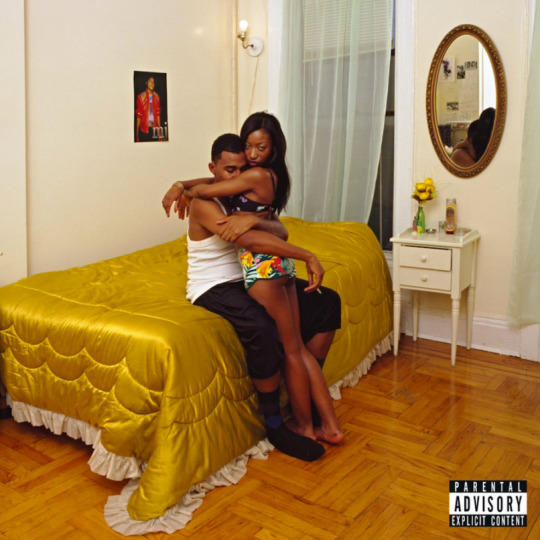
(”Freetown Sound” by Blood Orange)
Dev Hynes continues to explore themes of queer identity with his third album, Freetown Sound. In the song “Augustine”, Blood Orange considers how different aspects of identity have influenced his experiences, name-dropping Saint Augustine, Nontetha Nkwenkwe, and Trayvon Martin. This combination of references and ideas not only encapsulates the inner-workings of Dev Hynes’ mind, but also reflect the intersectionality that impacts how Dev Hynes interacts with the world. He considers his parents experiences with immigration with the opening lines, and then parallels their experiences with the experience of Saint Augustine, as he moved from Numidia to Rome. He recites the lines “See, Augustine / Late have I loved and chose to see / Skin on his skin / A warmth that I can feel with him”, which reference writings by Saint Augustine, yet fuses them with a queer standpoint that finds Blood Orange considering warmth from a man, “skin on skin”. With these lines, Dev Hynes is able to interlace many facets of identity such as sexuality, religion, and race within his songwriting. Blood Orange considers Christian influence he has felt in his life, his queer identity, and the immigrant experiences his family have faced. A key component of Blood Orange’s music is this consideration of identity and how these identities play into modern life and society.
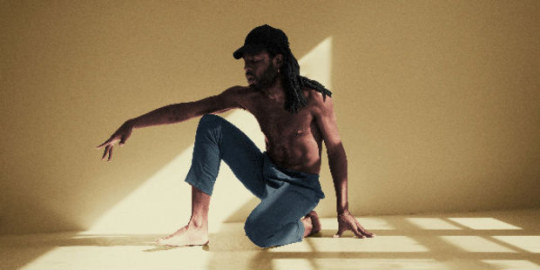
Blood Orange - Domino Records
The conscious consideration of how identities such as race affect people within modern society is continued through the track “Hands Up”, which considers racial injustice and police brutality within America. The song builds from a standpoint that wishes to build compassion and understanding for the people who are affected by police brutality, with Dev Hynes asking “Are you okay? What's in your way?”. This is meant to contrast the dialogue that often follows the news coverage of police brutality, specifically towards people of color, which is often dictated by the demonization of the victim. Instead of asking questions that are meant to dehumanize a person and justify murder or assault, Blood Orange wants to shift the attention to the victim. Who were they, and are they okay? These are questions that need to be asked by the media in order to build empathy and humanize the people who are victimized by state-sanctioned violence. Devonté Hynes further considers racist structures that pervade society within the chorus, “keep your hood off when you're walking cause they,” which is cut off by the repetition “Hands up, get out”. This phrase alludes to the rallying cry “Hands Up, Don’t Shoot”, as well as the shooting of Trayvon Martin, an unarmed black teen who was wearing a hood when he was targeted by a neighborhood watch member who deemed Trayvon to be “suspicious”. Blood Orange is processing these moments in history as well as standing up for the people who were victimized. In an interview with Entertainment Weekly, Blood Orange stated that singles such as these are meant to “find strength in the realization of how dangerous it is out there... there are people that are pretty oblivious to what’s happening in the world” (http://www.ew.com/article/2016/06/27/dev-hynes-blood-orange-freetown-sound-interview/). Blood Orange is referencing the power music has to communicate political issues such as racism and police brutality. By communicating stories that show empathy, that have emotional appeal, you could spread a message that considers the victim first, that considers justice first. As music spreads, more people may consider the pathos that is presented throughout the song, and consider the weight of the words “Don’t shoot!” that is chanted as the song closes.

Blood Orange - Crack Magazine (Photo by Emmanuel Olunkwa)
Blood Orange offers a unique perspective with the music he creates. Blood Orange creates music that presents queer perspectives, he is an artist that does not focus on labels. He is an artist that explores themes of sexuality, gender, race, religion, and he is a voice that needs to be listened to. He offers up his queer experiences, he expresses how his identities have shaped his life personally. The intersectionality and accessibility of Blood Orange’s lyrics represent a movement to create music that is able to represent groups that are not always heard within pop culture. There is a tendency for queerness within pop culture to not be intersectional and “lack discourse on race and class within the queer theoretical paradigm” (127https://queertheoryreadinggroup.files.wordpress.com/2015/09/22quare_22studies-2cor_almost_everythingiknowabo.pdf). Blood Orange considers his race, ethnicity, considers religious influence, considers his queer identity, and considers political movements within the lyrics of his songs, dissecting how these identities interplay within his life. At this time within history, it’s very important to consider the stories of all people. It’s important to be aware of what’s going on around us. This consciousness of events and tendency to question the systems in place that are contained by society is instrumental to creating the change that needs to be found within society, and can sometimes be found within the lyrics of a song.
Reference:
Peele, Thomas. Queer Popular Culture: Literature, Media, Film, and Television. Palgrave Macmillan, 2011.
“Why Pop Culture Matters.” Feminism and Pop Culture, by Andi Zeisler, Seal Press, 2008.
#QPOP2018#Blood Orange#Coastal Grooves#Freetown Sound#Dev Hynes#queer pop analysis#queer pop culture
2 notes
·
View notes